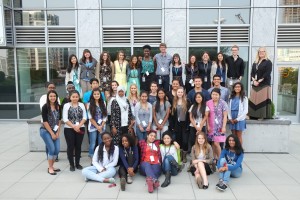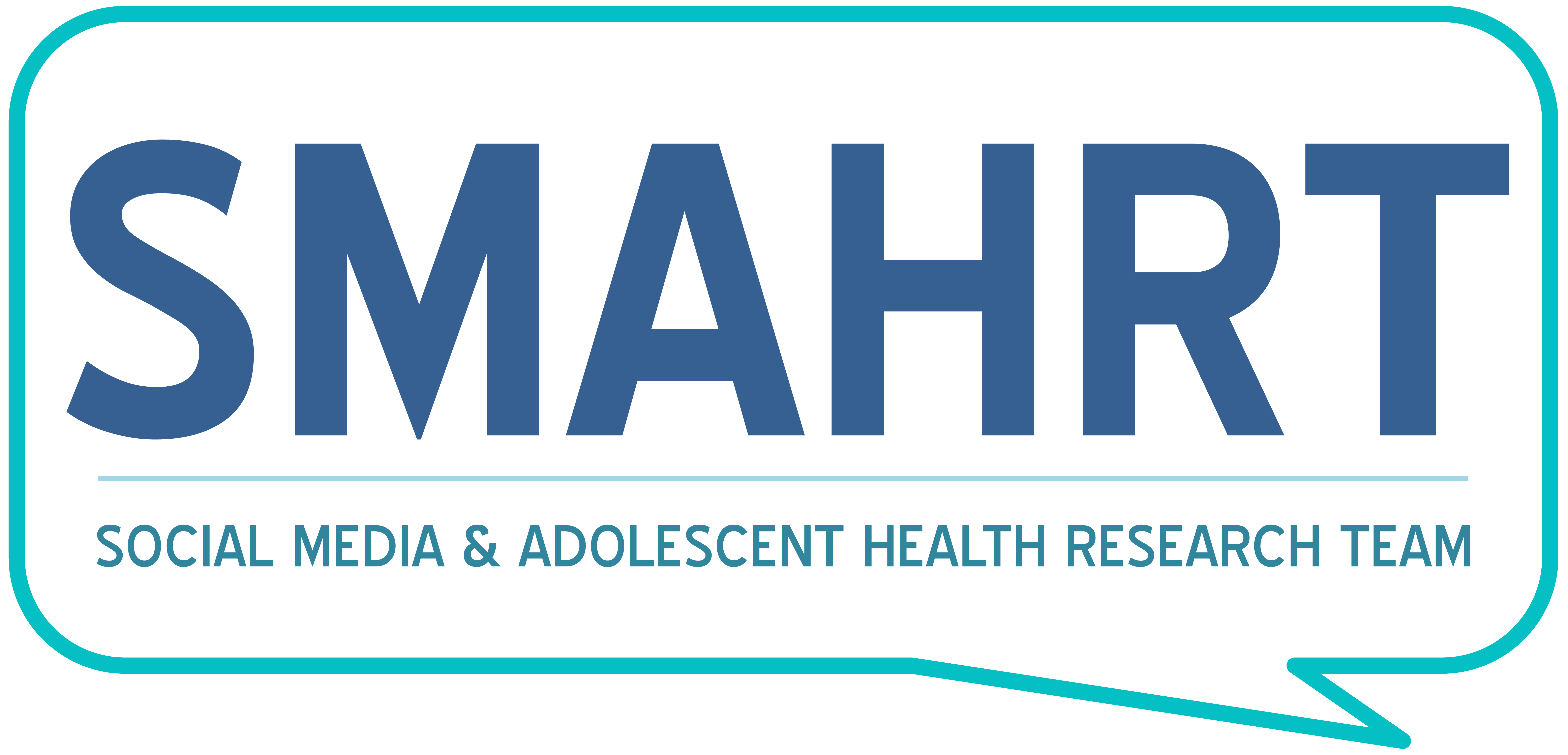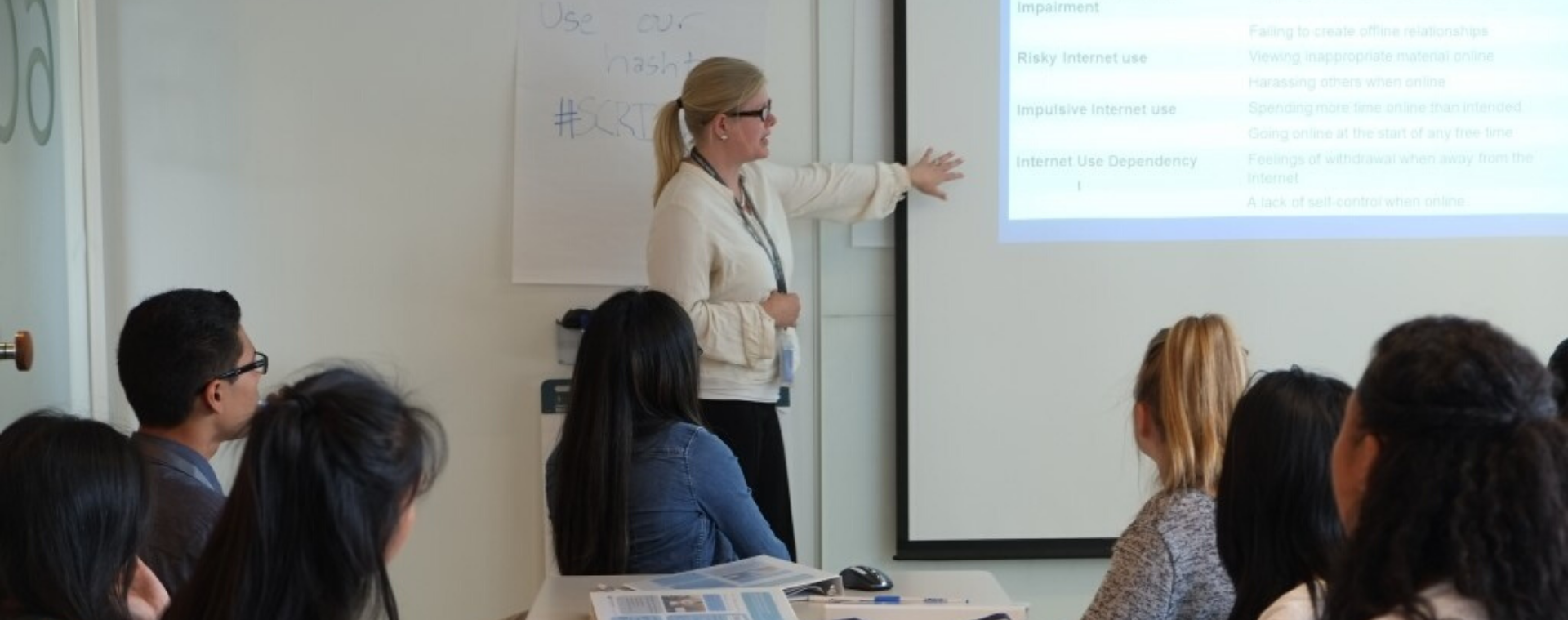 Today’s students work harder than ever to be the best college candidates they can be. They need exceptional grades, high SAT scores, and proven involvement in clubs and other extracurricular activities. This is fairly easy for students that have a robust network, but it’s not so easy for students without the same support. The Social Media and Adolescent Health Research Team (SMAHRT) created the SCRI Summer Scholars program with the intention of providing high school students exposure to science. This program provides 25 high school students with knowledge of the healthcare field and hands-on research experience they might otherwise not have gained.
Today’s students work harder than ever to be the best college candidates they can be. They need exceptional grades, high SAT scores, and proven involvement in clubs and other extracurricular activities. This is fairly easy for students that have a robust network, but it’s not so easy for students without the same support. The Social Media and Adolescent Health Research Team (SMAHRT) created the SCRI Summer Scholars program with the intention of providing high school students exposure to science. This program provides 25 high school students with knowledge of the healthcare field and hands-on research experience they might otherwise not have gained.
During their week with the team, Scholars are exposed to science in ways that they have not been exposed to before. They are taught scientific methods, and most importantly, different career paths in science. Novi Kaur, a 2015 Scholars alumna, said that learning about careers in science beyond nursing was the most impactful part of the program. She wasn’t aware of all the paths she could pursue until Summer Scholars, she said. When she applied, Kaur was interested in pediatrics, and though this hasn’t waned, Summer Scholars taught her she could practice pediatric medicine while also conducting research, like SMAHRT’s principal investigator, Dr. Megan Moreno.
Providing students the exposure to different career paths in the medical field is essential, because many of these alternate routes are not taught in school. In addition to widening her worldview, Scholars was an important addition to Kaur’s university applications and resume, as it further proved her interest, dedication and experience. This fall, she will be attending the University of Washington, where she plans to study psychology or sociology.
 According to Brad Kerr, a Clinical Research Associate with SMAHRT, Summer Scholars is also important because it gets members of minority groups involved in science. Kerr’s graduate education focused, in part, on the obstacles historically underrepresented groups face when pursuing such careers. When a woman, person of color or other member of a minority group enters science, they may encounter bias as they attempt advancing in their organization, Kerr said. Although Kerr has not personally witnessed any discrimination in the scientific field, he has heard surprising stories involving gender bias. In one, a woman scientist requested workspace to conduct a new project in her field of molecular biology. Her institution didn’t take the request as seriously as they would from a male faculty member, and ultimately denied her the space, saying they didn’t think her work would require all that she asked for. This scientist later found other women had similar experiences at the same institution, and she was a lead author on a report illustrating these experiences of gender bias. “She had never thought herself as a feminist or activist – she was a molecular biologist. But she found that she had to become a feminist to be to do work in molecular biology,” Kerr said.
According to Brad Kerr, a Clinical Research Associate with SMAHRT, Summer Scholars is also important because it gets members of minority groups involved in science. Kerr’s graduate education focused, in part, on the obstacles historically underrepresented groups face when pursuing such careers. When a woman, person of color or other member of a minority group enters science, they may encounter bias as they attempt advancing in their organization, Kerr said. Although Kerr has not personally witnessed any discrimination in the scientific field, he has heard surprising stories involving gender bias. In one, a woman scientist requested workspace to conduct a new project in her field of molecular biology. Her institution didn’t take the request as seriously as they would from a male faculty member, and ultimately denied her the space, saying they didn’t think her work would require all that she asked for. This scientist later found other women had similar experiences at the same institution, and she was a lead author on a report illustrating these experiences of gender bias. “She had never thought herself as a feminist or activist – she was a molecular biologist. But she found that she had to become a feminist to be to do work in molecular biology,” Kerr said.
Nikita Midamba, also a Clinical Research Associate with SMAHRT, has personally faced discrimination in the medical field because of her gender and skin color. She has explicitly been told that women should not be engineers, and she has also been questioned about being an engineer because she was a black woman. Despite these stand-out examples, she said the discrimination she most often faces is implicit, not explicit. In her experience, this implicit discrimination usually comes in the form of having to prove her intelligence because she is a black woman, whereas the supposed intelligence of a more privileged person is often taken for granted.
For Midamba, discrimination was upsetting—but it was also her motivation to prove people wrong, by showing them how she can do something that they told her she can’t do. Midamba was also motivated to encourage other women and minorities to get into science because she sees their essentiality in the science community where they are so underrepresented. This is why she thinks that Scholars is such an important program.
Jesse Gritton, another Clinical Research Associate with SMAHRT, has faced the similar subtle discriminations that Midamba has because she is a woman. She was questioned about what path she should go into in the medical field and social-work and nursing, more stereotyped feminine roles, were strongly recommend to her. Although she followed her own path into research, Gritton experienced these subtle discriminations because she was a woman. “Summer Scholars tries to address these subtle biases and tries to integrate women and minorities into science,” she said.
Summer Scholars is aimed, in part, at breaking this cycle by providing students who have historically been excluded or discouraged from practicing science, the opportunity to grow and practice research in an award-winning research institute. By increasing the presence of members of minority groups in science, we believe that science methods and outcomes will be enhanced from the excellence that comes from diversity. The second Summer Scholars cohort will meet July 11-15. Applications for the 2017 cohort will be available next spring at www.smahrtresearch.com.

